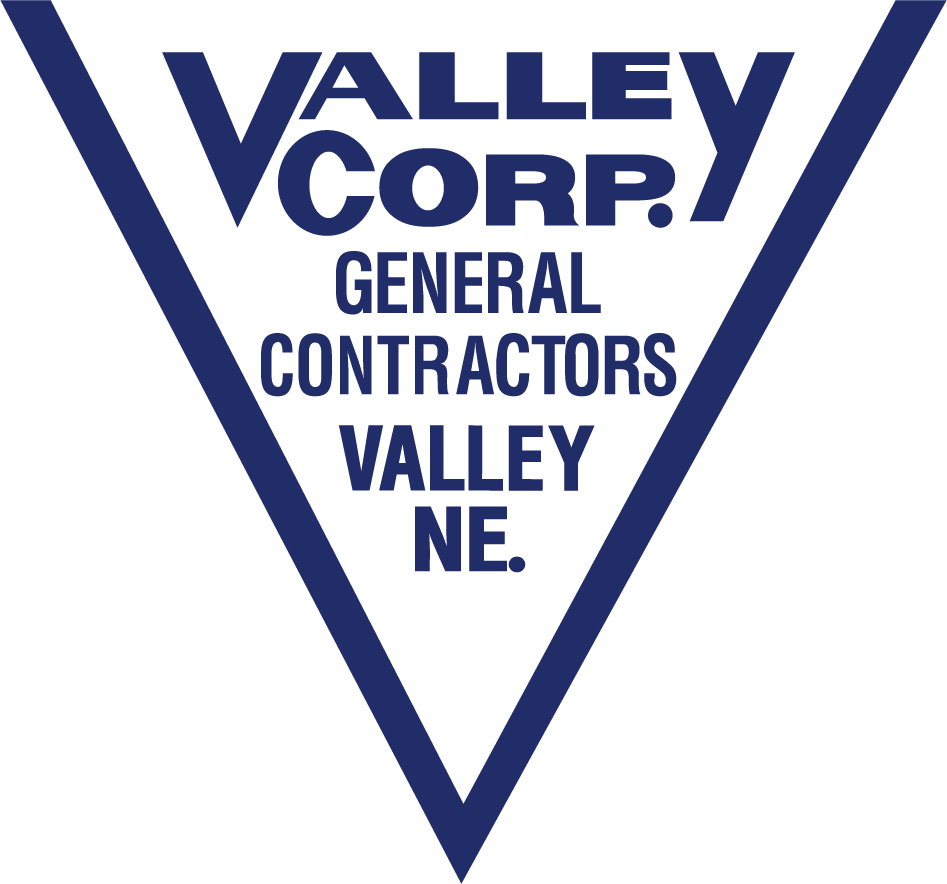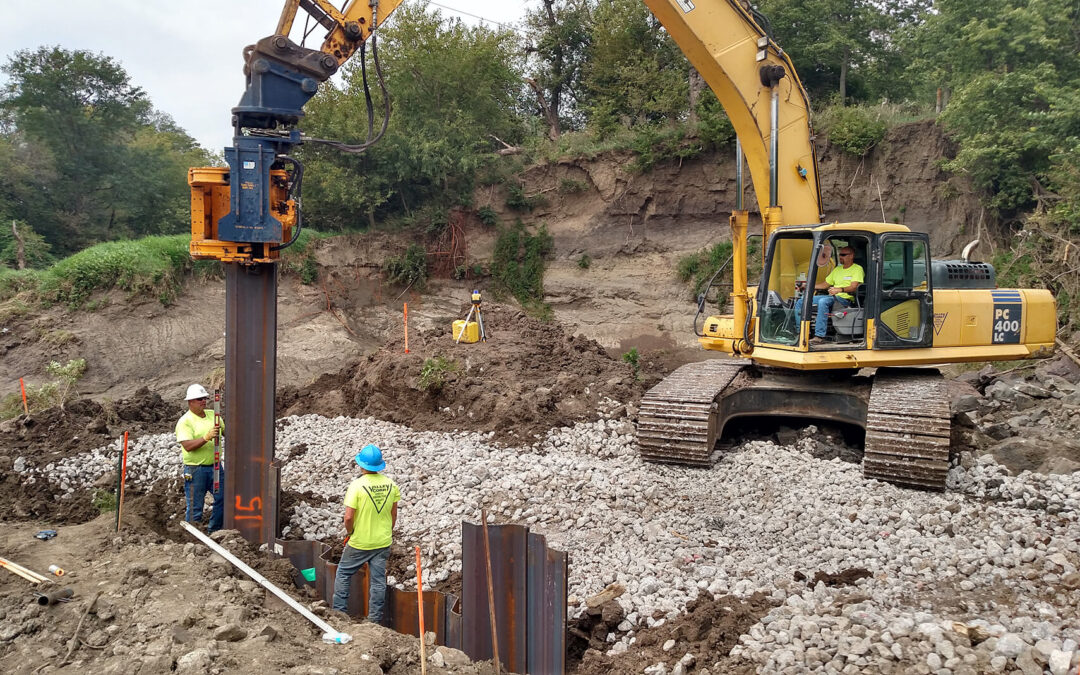The best construction solutions are sometimes among the simplest. Take sheet piling as an example. In terms of cost-effective construction that’s durable, versatile, and dead simple, it’s hard to beat. Strong enough to be permanent, light enough to be transported and reused with ease, it’s found use in many of the projects undertaken by Valley Corporation.
What is Sheet Piling?
Broadly speaking, a pile is a structure that manages loads and mediates between weak or compressible strata and strata that is stronger or less compressible. A sheet pile gets its name from its purpose (it’s a pile) and its shape (a series of large but thin interlocking sheet plates that are driven into the ground).
How Sheet Piling Works
Although wood, vinyl, and composites can be used for sheet piling, steel is the most common material used by sheet piling contractors. A sheet pile can be more or less flat, but more often it has a series of indents and outdents in order to resist horizontal pressure that would otherwise cause bending. They’re strong enough that they can be left in place, but they’re also constructed in such a way that they can be removed and repurposed once their work is done. Installation methods depend on the site and soil conditions, and can vary from hydraulics to vibratory or impact hammers.
Uses and Types of Sheet Piles
Sheet piling comes in a number of forms, including anchored sheet piles, cantilever sheet piles, and cofferdams, and has a wide number of uses. In recent years, we’ve used sheet piling to construct boat slip closures, deployed weir structures that repaired an eroded stream system, and even built retaining walls that required tens of thousands of feet of sheet piling.
But there are many more uses than that for sheet piling. Piling is ideal for environmental remediation, since it can prevent erosion. It shores up foundations and protects them from water damage, and can prevent flooding in structures close to bodies of water. Even temporary sheet piling has extensive use in construction, since it’s used to build cofferdams, prevents cave-ins, protects workers, and speeds excavation work.
Sheet Piling Pros and Cons
Clearly, sheet piling comes with a number of advantages. We’ve found that it has some disadvantages as well, though experience has taught us that those can be overcome with some foresight and proper planning.
- Sheet Piling Advantages
- Sheet pilings require only minimal maintenance
- Transport and handling is easy
- Modular structure makes for easy design adaptation
- Sheet pilings’ steel construction allows them to be recycled at the end of their service life, making them a sustainable choice
Sheet Piling Disadvantages
- Sheet piling can be difficult to install in rocky soil
- Certain installation methods — especially impact hammers and vibratory hammers — can be disruptive in residential areas
Sheet Piling Contractors in Valley
If you need sheet piling contractors in the Omaha area, you need Valley Corporation. Few companies can match our experience, capability, and commitment to quality. For all your sheet piling installation needs, reach out to us today.

